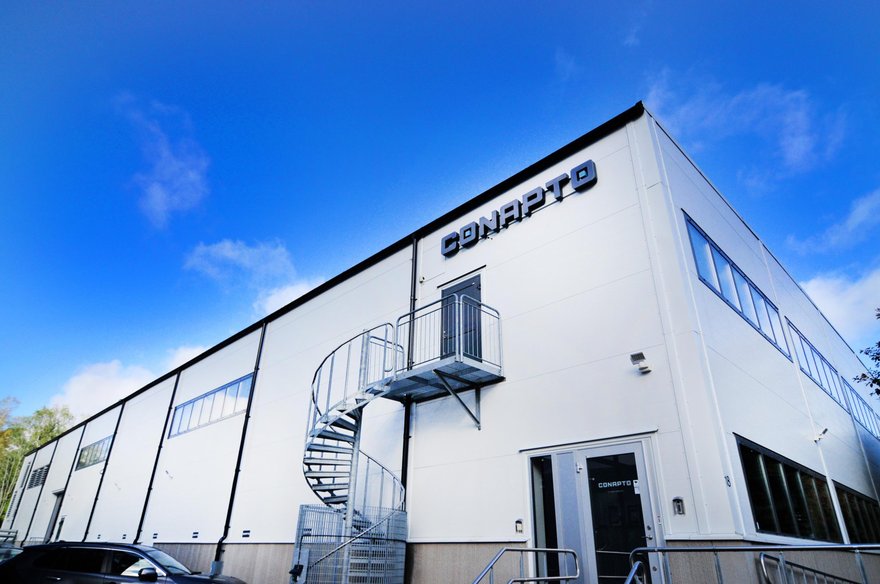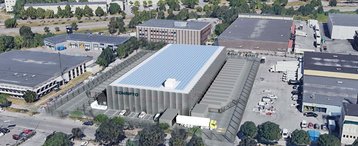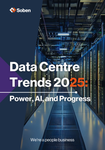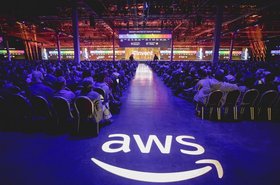Many enterprise companies in the mid-1990s through mid-2000s built their own data centers, That might seem strange now, but back then, companies did not have the plethora of options they do now. The multi-tenant data center colocation market was still in its infancy, and the cloud was not yet a serious option.
Since then, as the years have trickled by, those companies have hit a point where those data centers’ critical infrastructure and equipment need upgrades. Maybe they have already done one or two cycles of upgrades, but as the next big blow to their CapEx budget approaches, it surely only makes sense to begin to evaluate the options that are available today.
Maybe an on-premises facility was right in the 1990s, but now colocation or the cloud is a better fit. And when that happens, we don’t always hear so much about what happens to the data center a company has left behind.
For many companies, each of these facilities was painstakingly designed to fit a firm’s exact needs. Let’s not overromanticize, but it was something that the company built for itself. You could see it as a piece of art, or a child of the business. But now it has run its course.
One recent cloud migration story - Choice Hotels - gives us a glimpse of this sentimentality. The company’s CIO Brian Kirkland told CIO Dive: “I’m going to frame one of the servers as an homage, to say, ‘hey, this was our first CRS rack. This is what it used to be.’”
Becoming a tenant
One of the many options enterprises could explore for their data centers is sale-leaseback. Simply put, they sell their data center to an interested party and lease either the whole thing or a portion of the data center back for use as though it were a colo facility.
According to Ali Greenwood, executive director of Cushman & Wakefield’s data center advisory group, there are several motivating factors for enterprises to explore a sale-leaseback option.
“Enterprises might have built an 80,000 sq ft data center, only to realize that ten years later they are still only using 20,000 sq ft of it,” she says. “Or, on the flip side, they find they actually needed more capacity, as their business and technology needs have grown.”
“There’s also the economies of scale from an OpEx perspective. Operating your own data center is typically somewhere from two to five times the cost of leasing it from a colocation provider. You don’t have the shared economies of scale of engineers and security professionals that a large colocation provider has, or efficiencies of critical systems shared among a multi-tenant environment.”
She adds that colo providers, because of their scale, “may be able to get large staffing and maintenance contracts for a better cost.”
Greenwood also notes another big issue: at some point, businesses with an on-prem data center will have to upgrade the infrastructure and equipment, which can be a massive cost. It is the moment when these upgrades come around that switching to a different method - leasing, instead of owning - becomes appealing.
“Every couple of years, they're faced with really large CapEx replacements and upgrades that aren’t necessarily core to their everyday business,” Greenwood says. “If they're a financial institution or an insurance company, replacing a generator, UPS, or cooling tower in a data center once every three to five years isn’t necessarily the most efficient use of capital.”
A changing market
Sale-leasebacks can be separated into two main categories: the 100 percent single tenant “triple net” long-term leasebacks, and vacant to short-term leaseback assets.
Under triple-net leases, the tenant agrees to pay all the expenses of the property, including real estate taxes, building insurance, and maintenance.
Triple-net leases “were extremely attractive in the marketplace up until roughly two years ago, when the public markets cratered, and interest rates climbed,” Greenwood says. “It was an attractive asset for investors because it diversified their portfolio from healthcare, industrial, and office, to a new asset class, and it was a passive investment for them.”
But, the public markets did, in fact, crater, and interest fees increased significantly making the investment type challenging and less attractive. Data centers could previously be bought in a cap rate range of four-and-a-half to six-and-a-half percent during the height of the market, and now that number can be as high as eight-and-a-half percent.
“If you bought that asset just a few years ago at a 4.8 percent cap rate, you're not likely to sell it now for six and a half or seven,” explains Greenwood.
The cap rate is calculated by dividing a property’s net operating income by its asset value or capital, and is an assessment of the yield of a property per year. A general rule of thumb is that the higher the cap rate, the riskier the investment.
Nicholas Carter, senior director of US tax research at asset and fund intelligence company Altus Group, says that recent years have seen the number of sale-leaseback deals slow “considerably” in line with the interest rate environment.
Carter says: “Interest rate increases have had some operators with data centers that received purchase prices from investors that are tied to rent and a cap rate decrease that isn’t available anymore due to interest rates. It simply isn’t allowing the same constant debt to be available to the investor on the buyer side, so purchase prices are compressed.”
He does, however, note that there may be an offsetting factor in data center markets as “there is so much money that is traded chasing the development of new data centers.”
Rising interest rates increase the cost of capital, so fluctuations can result in rising cap rates, as is the case in the current economic market. Higher interest rates have also increased financing costs which limits translation volume and leads to greater borrowing costs.
As a result, many sale-leasebacks now fall into the second category - short-term leaseback agreements, often with the client looking to move either to a colocation data center or to the public cloud. This is because inflation has increased rents and owners can get a better return on investment by leasing the full space at competitive rates.
Such arrangements could potentially raise heart rates among landlords, given that they could leave them with a tenantless data center. But then, having a tenant isn’t always a guarantee of payment, as Keppel DC REIT recently discovered. Having purchased two data centers from Bluesea Data Development in 2021 and 2022, Keppel and Bluesea are now attempting to resolve a dispute over $6.8 million in unpaid rental fees.
While the relationship between the companies does not seem damaged - Keppel is not seeking litigation - what it tells us is that there really are no guarantees.
The short-term lease method may not be such a big risk at the moment, says Greenwood. In the current market, you are unlikely to find yourself tenantless, as demand is at an all-time high. The short-term leaseback is also likely to see a tenant gradually migrating out of their data center, so it isn’t a sudden switch for the most part.
“It was much more challenging to sell vacant to short-term leaseback data centers five years ago,” Greenwood says. “I would be encouraging tenants to extend their leases to make the sale more attractive, but now the demand is much higher because vacancy rates are at an all-time low, so buyers are asking if these facilities can be vacated faster so they can plug a new tenant in.
“It’s extremely challenging to find data center space across the US right now, particularly three to ten-megawatt pockets, because [new] data center space is being pre-leased now before construction even commences. Microsoft, Google, and AWS, for example, are fully leasing buildings that aren’t even going to be delivered for two to four years from now.”
Indeed, the vacancy rate in many major markets across the US sits below around three percent, currently, which takes the pressure off landlords significantly. That data center space will, for all intents and purposes, fill itself.
On top of that, with demand so high, rental rates are also on the rise, which gives the data center increased intrinsic value.
Altus Group’s Carter argues, however, that sale-leasebacks can add some complications when it comes to analyzing the market.
“The price makes sense to the buyer and the seller,” he says. “The risk is that analysts who use these transactions as a proxy for market value are often misled because these aren’t ‘true’ market transactions.”
Carter explains that a market transaction is defined by both parties acting in self-interest. “There isn’t necessarily a conflict of interests, but they are certainly not running in parallel, and sale-leasebacks are driven by interests running in parallel so the pricing reflects that,” he adds.
He offers the example that if the owner/operator aims to achieve a higher sale price, they in turn might agree to a higher rent. Those who are in charge of finding market values as required for taxation purposes can then be misled by the rental value or sale price formed through the sale-leaseback.
Cushman & Wakefield’s Greenwood concurs, but argues that this applies far more to the traditional 100 percent triple net lease model. “With a triple net sale-leaseback, it's a math equation,” she says. “You know the cap rates and NOI [net operating income] and that’s going to drive value. Then there are two levers you can move if your tenant wants to pay above or below market rate, and that’s going to directly influence the purchase price.
“In short-term leasebacks, that doesn’t vary much because they are moving out, and they are generally not leasing the full space. People are not applying the cap rate methodology.”
Who makes the first move?
According to Greenwood, it's pretty mixed as to who is initiating these types of deals. Sometimes it is the enterprise looking to shed its data center from the balance sheet, in other cases it’s a colocation provider looking to expand into a market.
Alternatively, a colocation provider may be seeking a customer.
Stefan Nilsson, sales and marketing manager of colo operator Conapto, says his company’s sale-leaseback offering allows customers to “stay in their own facility, but rent it through us for a specific time.” That, he says, “they can then decide, and move into our facility and then we can decommission and close down the old data center.”
Conapto operates in Sweden, and has so far done two significant sale-leaseback deals. These differ, however, from the traditional sale-leasebacks as depicted by Greenwood in the US, due to the tendency in Sweden for property to be leased, not owned.
Most property is owned by real estate companies and then leased back, meaning that fewer businesses own a data center they need to get rid of.
In the case of Conapto, its service is much more about the management and operations side of handling the move, Nilsson says.
“What we do is offer the enterprise companies to do their due diligence and technical audit, as well as a commercial breakdown of the cost structure - what they are currently paying for,” he says. “From there, we get an upfront cash payment and provide terms and conditions for gradually moving them into our facility. It sounds really easy, but it’s not easy to do.”
Conapto then wouldn’t have a data center on their hands to either sell or use. Instead, it is simply a matter of canceling the lease. Where Conapto benefits from the sale-leaseback deal is having a new customer for their existing colocation footprint, one which has been designed to run sustainability and according to their business goals.
One of the company’s more notable sale-leaseback agreements was conducted with Swedish grocery retailer ICA.
ICA began seeing a rapid increase in its need for IT and digitization a couple of decades ago, and proceeded to build its own data center. With an increase in virtualization and services heading to the cloud, this solution ceased to be the more cost-effective option.
Conapto has taken over the property leases from ICA, and when ICA has moved into Conapto’s colo facilities, the premises will be handed back to the real estate company. It claims the move will see ICA save around 50 percent in costs per year compared to operating its own data center, as well as reducing greenhouse gas emissions by the equivalent of approximately 116 tonnes of CO2 per year.
Hurdles to widespread adoption
However, Nilsson notes that despite some consensus among those within the industry that this can be a best-of-both-worlds solution, it hasn’t proven as popular as hoped.
“I would be lying to you if I said that it has been a complete success,” he admits. “We have done two sale-leasebacks with bigger enterprise companies in Sweden, which have been very successful. It’s a successful outcome when we do it, but we have done too few.”
This experience is shared by Cushman & Wakefield’s Greenwood, who says she handles a couple of sale-leasebacks per year. Beyond that, she reckons there are on average twelve transactions across the entire US market being conducted annually. When we compare this to other types of data center deals, this represents a very small part of the overall picture.
Nilsson puts this down, to an extent, to the nerves of a company’s management team. “Very few management teams dare to do this, because it's a shift in strategy to outsource their data center,” he says.
“For example, the big commercial banks in Sweden, 20 years ago all built their own data centers because there wasn’t much colocation on offer. They’ve been used to doing that for so many years, it's a really big strategic decision to quit.”
Nilsson adds that, while a company’s chief financial officer might see the benefits of such a strategy, often the IT teams will be unwilling to let go of control of their data center.
“The IT department has been managing its own data center for five, 10, even 20 years,” he says. “They want everything kept as usual, and for them, change in control is not always embraced.”
But it isn’t just about teams not wanting to share control, though, argues Greenwood.
“A lot of these companies have people that work full time at their data center, and they [the company] are sensitive to that,” she says. “Maybe you were the CIO or CTO who decided to build the data center, and selling it is hard in that aspect. It’s a big shift in the way the business has interacted with a data center.”
Despite these obstacles, Greenwood thinks that sale-leasebacks are going to increase in popularity.
“I think there’s going to be more, and the volume will continue to increase, largely because of public adoption of the cloud,” she explains. “A lot of the data centers were also built right around the early 2000s and are reaching 20 to 25 years old. Things are starting to need a costly capital refresh. People are at a point where they are going to have to decide whether they largely re-invest in their owned data center, or not.
“Beyond that, there is the current economy. People are looking at their cash flow and balance sheets and monetizing assets is one way of helping improve that, particularly with a looming CapEx.”










